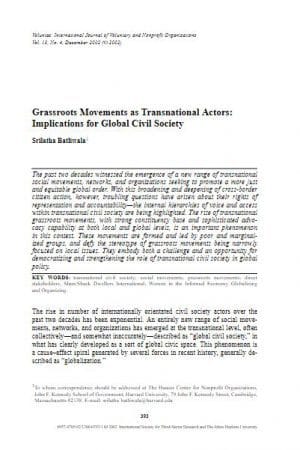
Policy highlights:
- The rise of the ‘global civil society’ has changed what a grassroots movement entails and how we use the concept. In studying these movements, one should consider: 1) who is most directly affected, 2) real links with stakeholder constituencies, 3) how and when to use the term ‘movement’, and 4) the rise of new types of structures and partnerships.
- This article presents two interesting case studies on civil society movements, which illustrate the power and potential of grassroots movements that go global, namely, by: 1) Women in the Informal Economy Globalizing and Organizing (WIEGO) and 2) Slum/Shack Dwellers International (SDI).
- The successes booked by these examples can be primarily found in issues of legitimacy and accountability; both movements: 1) had a mass base of direct stakeholders; 2) took a genuinely ‘gendered’ approach, 3) do not position themselves or their constituents as victims, 4) used research and data, 5) created new forms of partnership with diverse stakeholders, which have enhanced their access to and impact on public policy, 6) have concrete sustainable strategies, 8) changed definitions, debates, and policy dialogues about their constituents, and 10) represent serious numbers, across a significant number of countries and regions.
- The role of transnational grassroots movements contains important clues and lessons, especially in terms of legitimacy. Civil society actors need to make links with such movements and make way for them in forums. Existing global advocacy groups need to link up more consciously with local movements and develop their positions and agendas in a more bottom-up way. All civil society organizations and networks should build strong and accountable relationships with grassroots constituencies, organizations and movements.






